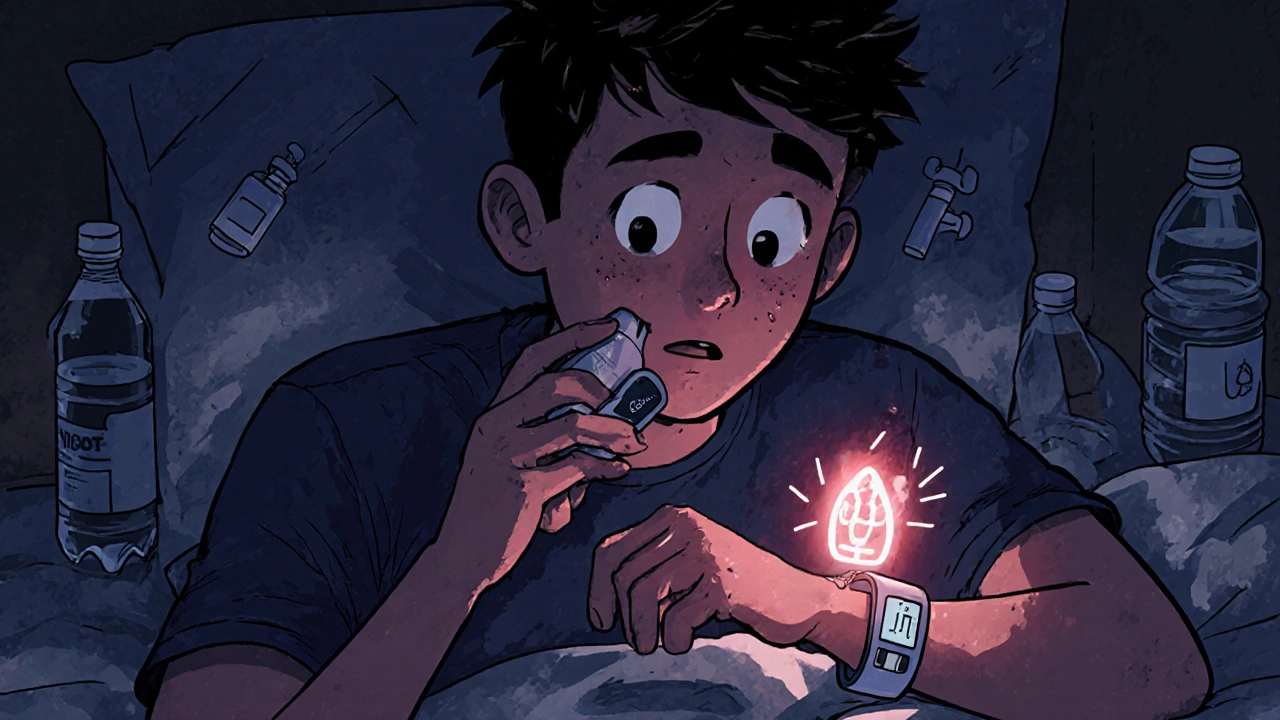DKA Treatment: What Works, What Doesn't, and What You Need to Know
When diabetic ketoacidosis, a life-threatening complication of diabetes caused by severe insulin deficiency. Also known as DKA, it happens when your body starts breaking down fat for energy because it can't use glucose properly. This isn’t just high blood sugar—it’s a chemical cascade that turns your blood acidic. Left untreated, it can lead to coma or death. DKA treatment isn’t optional. It’s urgent. And it’s not just about giving insulin. It’s about fixing what insulin alone can’t fix: fluid loss, electrolyte chaos, and acid buildup.
Most people think DKA treatment means a big insulin shot and waiting. But that’s not enough. You need fluids—lots of them—to rehydrate the body and flush out ketones. You need electrolytes, especially potassium, because insulin drives potassium into cells and can crash levels dangerously low. And you need careful monitoring. Hospitals use blood tests every few hours to track pH, glucose, and potassium. Too much insulin too fast? You risk brain swelling. Too little? The acid keeps building. It’s a tightrope walk, and it’s why DKA treatment almost always happens in a hospital or ER.
What you won’t find in most guides: why some people get DKA even with insulin. It’s often infection, missed doses, or new-onset type 1 diabetes. Older adults with type 2 diabetes can get it too, especially if they’re sick or on SGLT2 inhibitors. And let’s be clear—home remedies don’t work. Drinking water won’t fix acidosis. Eating sugar won’t help. Only medical intervention does. That’s why knowing the warning signs matters: fruity breath, extreme thirst, nausea, confusion, rapid breathing. If you or someone you care about has diabetes and shows these, don’t wait. Call 911 or go to the ER.
The posts below cover real-world cases and comparisons you won’t find in textbooks. You’ll see how insulin therapy is adjusted in practice, why electrolyte balance is more critical than glucose numbers alone, and how conditions like kidney disease or heart failure change the treatment plan. You’ll also find warnings about common mistakes—like delaying fluids or misreading lab results. These aren’t theory pieces. They’re from frontline pharmacists and clinicians who’ve seen what happens when DKA treatment goes wrong. What you’ll learn here could save a life—maybe your own, or someone you love.

- 13 Comments
Diabetic ketoacidosis is a life-threatening emergency caused by insulin deficiency. Learn the warning signs-from extreme thirst to fruity breath-and what happens in hospital treatment. Early action saves lives.
